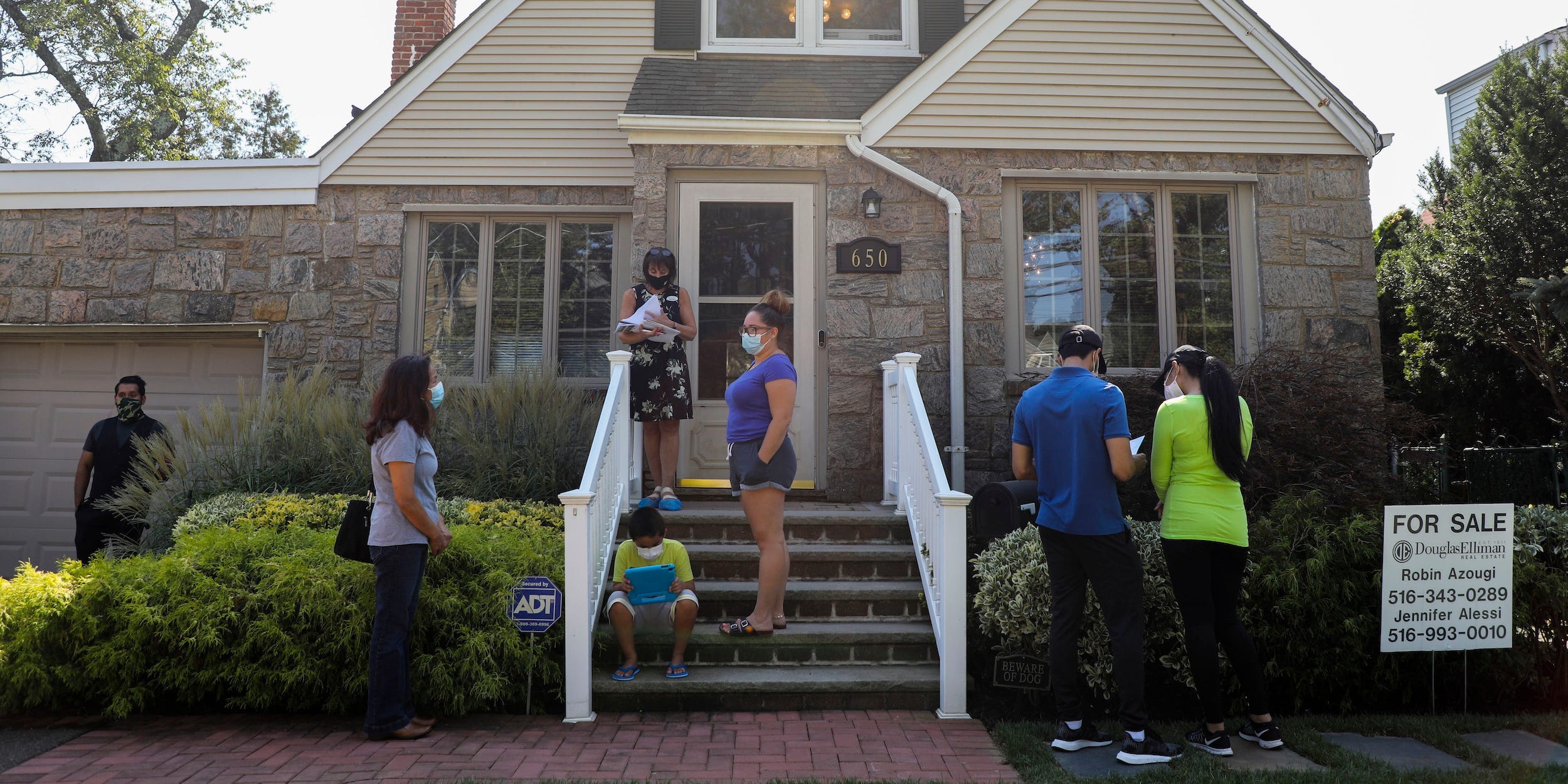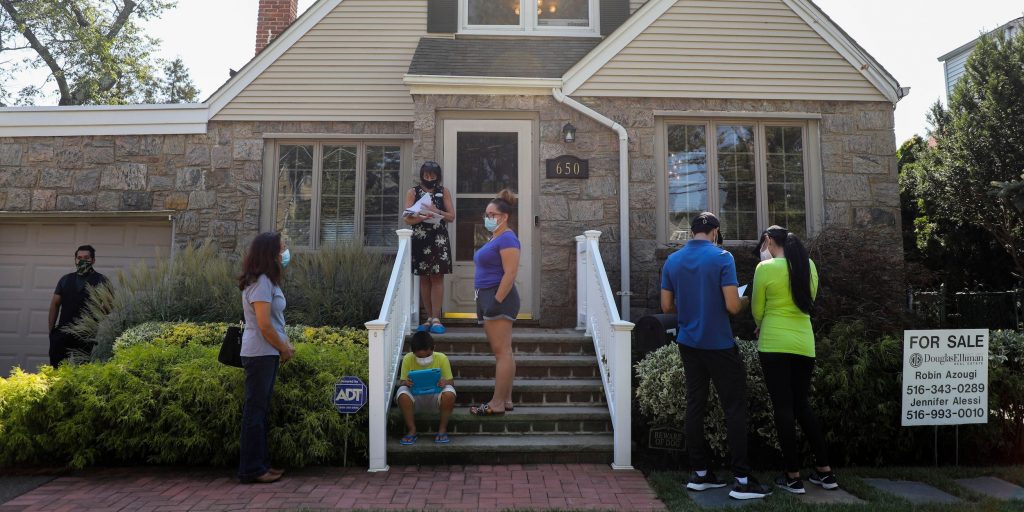
- US home prices leaped 13.2% year-over-year in March, according to S&P CoreLogic Case-Shiller data.
- That marks the strongest rate since December 2005 and beats the 12.5% estimate from economists.
- Home inflation continues to skyrocket as elevated lumber prices slow a rebound in construction.
- See more stories on Insider's business page.
Prospective homebuyers playing the waiting game just keep losing.
US home prices shot 13.2% higher year-over-year in March as the housing market boom charged on, according to the S&P CoreLogic Case-Shiller US Home Price Index. The median estimate from economists surveyed by Bloomberg was for a 12.5% leap. The reading marks the largest year-over-year jump since December 2005.
Prices rose 1.5% month-over-month, according to the Tuesday report. That exceeded the median estimate for a 1.3% jump and marked the largest single-month bounce since October.
Phoenix and San Diego saw home prices climb the most, with year-over-year increases of 20% and 19.1%, respectively. Chicago saw prices climb 9%, the smallest one-month jump of the 20 metropolitan areas tracked by CoreLogic.
"Massive home buying demand shows no signs of abating despite some rise in mortgage rates and concerns of overheated home price growth," Selma Hepp, deputy chief economist at CoreLogic, said in a statement. "At the same time, hopes that new listings would proliferate as mass vaccinations encourage baby boomers to list their homes is showing little signs of taking place."
The US housing market has been on an absolute tear this year. Rock-bottom mortgage rates sparked a buying spree last year that's only intensified as the inventory of available homes shrank further. The supply-demand imbalance is now driving prices higher at an accelerating pace as sellers demand increasingly large sums.
Sales have slowed somewhat after peaking earlier this year, but that trend has more to do with a massive supply shortage than a lack of demand. The US boasted just 2.4 months of existing-home supply in April, up slightly from March levels but still well below the pre-pandemic norm. Last month also saw prices of previously owned homes jump to a record-high $341,000, signaling the price rally continued through April.
The breakneck price growth risks pricing Americans out of the market. Millennials in particular face the worst fallout. The generation is on the cusp of entering its peak homebuying years, but with the pandemic and the 2008 financial crisis weighing on their finances, millennials face a steeper climb than past generations to buy their first homes.
Increased homebuilding would likely cool the market boom, but contractors face obstacles of their own. Lumber prices, while off their May highs, remain elevated. That, along with a shortage of building lots, cut into contractors' profit margins. Nearly half of all builders added escalation clauses to contracts last month, which allow them to raise selling prices to counter higher costs. And nearly 20% of contractors said they're delaying construction or sales, according to a survey conducted by the National Association of Realtors.
That's shown up in housing starts data released last week, which unexpectedly slid 9.5% in April. The decline follows a nearly 20% spike in March and suggests the building rebound won't arrive as soon as potential buyers likely hope.
Economists expect the imbalance, and its effect on prices, to persist for at least a few years. Experts surveyed by the Urban Land Institute see single-family starts holding at an annual pace of 1.1 million this year before rising to 1.2 million in 2022 and 2023. Price growth is expected to weaken to 8.1% this year and 5% in 2022 before returning to its two-decade average of about 4% in 2023, according to ULI.
Dit artikel is oorspronkelijk verschenen op z24.nl

